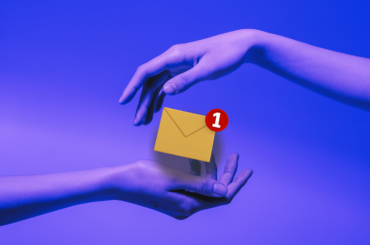Every salesperson I know has a love-hate relationship with cold emails. The reason is quite simple. When cold emails work, they work incredibly well – often helping you book more meetings than you can handle.
But when they don’t work, you end up spending hours of our precious time in vain.

Jokes aside, I can tell you this: cold emails do work. For some people.
So how do you make them work for you? How do you leverage the power of personalized emails to become a super seller? With customers being constantly bombarded with pushy and irrelevant sales emails, how do you stand out in the sea of spam?
Spoiler alert! Cold emails with even basic personalization have a 26% higher open rate than emails with no personalization. What if I said, there’s a way to bump that number up, way higher, simply by taking your personalization to the next level, beyond basic name inserts?
A 100% response rate on your cold outreach is only theoretically possible. But fret not. There are some practical tricks that can help you get pretty darn close to that magic number. You’ll learn a handful of such tricks in this blog post. Let’s dive straight in!
Why personalize cold emails
Before we dive into sure-fire ways to book more calls through a cold email, I want you to recall your daily email inbox activities.
How many emails do you receive daily, asking you to book a demo? More than you can count, right? How many of those do you open? Barely any. I know, because, hey, me too.
However, a few emails may have your name in the subject line. How many of those do you check? More than the rest? Thought so.
That said, personalizing your cold emails could be a bad idea for you, if:
- You’re comfortable with your email spending eternity (more like 30 days) in the spam folder
- You don’t want your prospect to open, let alone respond to your email
- You don’t want their undivided attention

The state of un-personalized emails in 2022
Book more meetings by personalizing your cold emails
I like to ask myself four questions before drafting any cold email.
- Who is my prospect?
- How can my product or service add value to them?
- How do I communicate the value-add?
- What action do I want them to take after reading this email?
For the sake of convenience, I’ll assume your answer to question #4, is booking a meeting. And I’ll be honest, only you are qualified to answer questions #1 and #2, so go on and do it.
For question #3, I’m here to guide you through it. Here are 5 simple (but not easy!) steps to personalizing a cold email:
Subject line
A wonderful email that adds value to your recipient means nothing without a compelling subject line, because without a good subject line, it won’t be opened in the first place.
- Leave them wanting more, but don’t be too vague
- Use pronouns whenever you can, and
- Include their name. Here’s some trivia: emails with the recipient’s name on the subject line have an 18.30% open rate.
To make small talk, or not. That is the question.
Ever noticed how some people make it a point to include a thoughtful ‘How are you?’ or ‘Hope you’re having a great day’ in their email conversations? This simple, human check-in is important for them. On the other hand, there are also people who will completely ignore your questions about their well-being and get straight to business. They think exclamation marks are overkill, and will inadvertently mistake your efforts to connect with them as unprofessionalism.
This is why you need to figure out the type of customer you’re pitching to, and change your tone to suit them.
Salutation
Salutations have been trite, cliched and rotten for a while now: partly because there are industry norms, and partly because we simply default to uninspired greetings. I’m here to say – do better! Experiment!
Sometimes “Hey” works better, sometimes “Dear” does. Sometimes, skipping both and ominously mentioning their name does the trick.
Watch your prospect’s tone on social media, podcasts or interviews; these are usually a great indication of what kind of salutation you should use.
Length of the body
Some people like a detailed approach. Some people would rather you get to the point. Choose wisely. Again, there’s nothing like getting a good read on your prospect and crafting your email body accordingly.
I’m keeping this point short so you know the kind of prospect I am 😉
Closing
You’ve made your pitch, now you want to book a meeting. So tell them! But how do you put it in words: “Shall we discuss the next steps coming Friday at 4PM eastern time?” or “Let me know when’s a good time to discuss this further.”
Some people find it convenient when you send them the available time slots, so they don’t have to figure out the logistics. Some think it’s cocky – they haven’t even agreed to your pitch yet.
What would your prospect respond to better? I hate to say it, but the answer is – it depends. Research your prospect well enough, and you’ll know.
Challenges with cold email personalization
There is an inherent paradox that comes with personalizing cold emails. Your prospect will only respond to you positively when you write to them like you know them. But for you to get to truly know them, you need them to respond.
Along the way, you will run into a few challenges like:
Gauging tone of voice and word choices
While selling to a customer, you really need to use language that resonates with them. This will exponentially increase your chances of booking a meeting with them. But it’s quite difficult to understand your customer’s preferences without knowing them on a personal level
Identifying buying traits
Are your customers early adopters or laggards? What can you do to put them in a purchasing mindset? Do they have a high risk appetite? So many questions… not enough answers.
This is because, most often, the only people who can give you accurate answers to these questions are the prospects themselves.
Understanding customer personalities before making a pitch
Antonio Damasio, a professor of neuroscience at the University of Southern California, asserts that 95% of customers make buying decisions with emotions, rather than logic. Given that, sales professionals need to go the extra mile to understand their prospect’s personality and tug on heartstrings with the perfectly crafted message.
You’ll be shooting yourself on the foot if you make an emotional pitch to a numbers-driven prospect, or vice versa.
There are two ways to understand your customer’s personality before making a pitch:
- Deep research: This method is ideal for small organizations or individuals who are looking to dip their toe into the personalization game. Here, you can simply conduct extensive research on your prospect to understand their interests and preferences. Social media accounts, author profiles, YouTube videos et al. would come in handy over here.
However, this can be time-consuming and hard to scale for larger organizations. - Using an AI sales assistant: If you’ve already been personalizing your emails and would like to level up, you could use an AI-powered sales assistant like Humantic AI. You can access personality insights on your prospects wherever you spend most of your time as a salesperson: LinkedIn, Gmail, CRMs like Hubspot or Salesforce, or sales enablement tools like Outreach and Salesloft. Learn how you can use Humantic AI’s personality profiles to master sales prospecting.
That’s all, folks. Hope this blog gets you started on the journey to harness the superpower that is personalized cold emails. How do you go about leveraging cold emails to book more meetings? Sound off in the comments!




1 Comment
Pingback: How to Choose the Right Closing Technique, Always - Personality AI